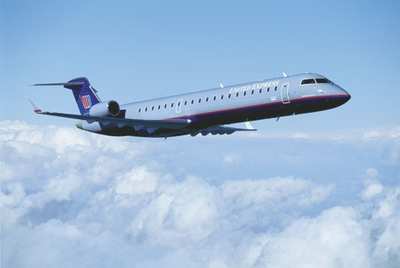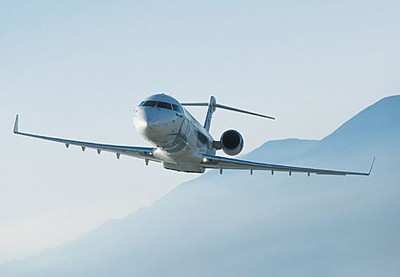Sun, Oct 02, 2022
AD 2022-12-03 Prompted By Reports Of Displayed Headings Changing From MAG to TRU With No Pilot Action
The FAA is adopting a new airworthiness directive (AD) for certain MHI RJ Aviation ULC Model CL600-2B19 (Regional Jet Series 100 & 440) airplanes; Model CL-600-2C10 (Regional Jet Series 700, 701 & 702) airplanes; Model CL-600-2C11 (Regional Jet Series 550) airplanes; Model CL-600-2D15 (Regional Jet Series 705) airplanes; Model CL-600-2D24 (Regional Jet Series 900) airplanes; and Model CL-600-2E25 (Regional Jet Series 1000) airplanes.

This AD was prompted by reports of displayed headings changing from MAG to TRU with no pilot action, which may result in misleading heading information on both primary function displays (PFDs) and multi-function displays (MFDs), and misleading course information on flight management systems (FMSs). This AD requires amending the existing airplane flight manual (AFM) to provide the flightcrew with updated procedures for accurate heading and course information. The FAA is issuing this AD to address the unsafe condition on these products. This AD is effective November 3, 2022.
Supplementary Information: Transport Canada Civil Aviation (TCCA), which is the aviation authority for Canada, has issued TCCA AD CF-2021-19, issued May 13, 2021 (TCCA AD CF-2021-19) (also referred to after this as the Mandatory Continuing Airworthiness Information, or the MCAI), to correct an unsafe condition for certain MHI RJ Aviation ULC Model CL-600-2B19 (Regional Jet Series 100 & 440) airplanes; Model CL-600-2C10 (Regional Jet Series 700, 701 & 702) airplanes; Model CL-600-2C11 (Regional Jet Series 550) airplanes; Model CL-600-2D15 (Regional Jet Series 705) airplanes; Model CL-600-2D24 (Regional Jet Series 900) airplanes; and Model CL-600-2E25 (Regional Jet Series 1000) airplanes. You may examine the MCAI in the AD docket at regulations.gov by searching for and locating Docket No. FAA-2022-0155.

The FAA issued a notice of proposed rulemaking (NPRM) to amend 14 CFR part 39 by adding an AD that would apply to certain MHI RJ Aviation ULC Model CL-600-2B19 (Regional Jet Series 100 & 440) airplanes; Model CL-600-2C10 (Regional Jet Series 700, 701 & 702) airplanes; Model CL-600-2C11 (Regional Jet Series 550) airplanes; Model CL-600-2D15 (Regional Jet Series 705) airplanes; Model CL-600-2D24 (Regional Jet Series 900) airplanes; and Model CL-600-2E25 (Regional Jet Series 1000) airplanes. The NPRM published in the Federal Register on April 1, 2022 (87 FR 19026). The NPRM was prompted by reports of displayed headings changing from MAG to TRU with no pilot action, which may result in misleading heading information on both PFDs and MFDs, and misleading course information on FMSs. The NPRM proposed to require amending the existing AFM to provide the flightcrew with updated procedures for accurate heading and course information. The FAA is issuing this AD to prevent operation outside the terrain
and obstacle protection provided in instrument procedure and route designs, which could result in reduced operational safety margins. See the MCAI for additional background information.
More News
From 2023 (YouTube Edition): New Propulsion Scheme Optimized for AAM Applications Founded in 2017 by Eric Bartsch, Pat Anderson, and Erik Lindbergh (grandson of famed aviation pion>[...]
During The Initial Climb, The Engine Began To Operate Abnormally And, After About Three Seconds, Experienced A Total Loss Of Power On October 29, 2025, about 1820 Pacific daylight >[...]
Aero Linx: Women in Aviation International Women in Aviation International is the largest nonprofit organization that envisions a world where the sky is open to all, and where avia>[...]
“We’ve paid for the cable line’s repair for the customer and have apologized for the inconvenience this caused them...” Source: Some followup info from an A>[...]
“We have long warned about the devastating effects of pairing optimization. Multiple times over many months, we highlighted how schedule manipulation, unbalanced schedules, a>[...]
 Classic Aero-TV: VerdeGo Debuts VH-3 Hybrid-Electric Powerplant
Classic Aero-TV: VerdeGo Debuts VH-3 Hybrid-Electric Powerplant NTSB Prelim: Grumman American Avn. Corp. AA-5B
NTSB Prelim: Grumman American Avn. Corp. AA-5B ANN's Daily Aero-Linx (12.02.25)
ANN's Daily Aero-Linx (12.02.25) Aero-News: Quote of the Day (12.02.25)
Aero-News: Quote of the Day (12.02.25) Aero-News: Quote of the Day (12.03.25)
Aero-News: Quote of the Day (12.03.25)




